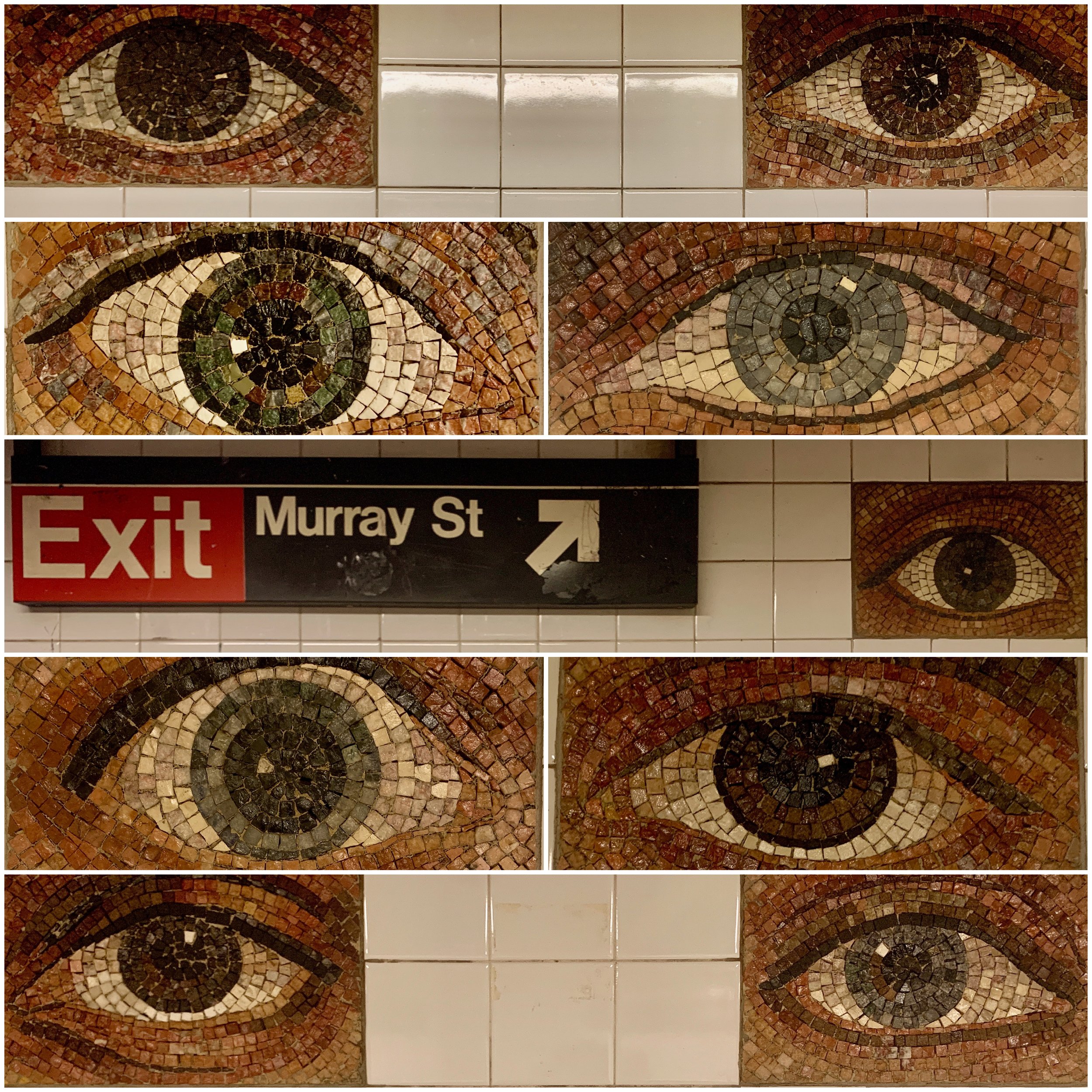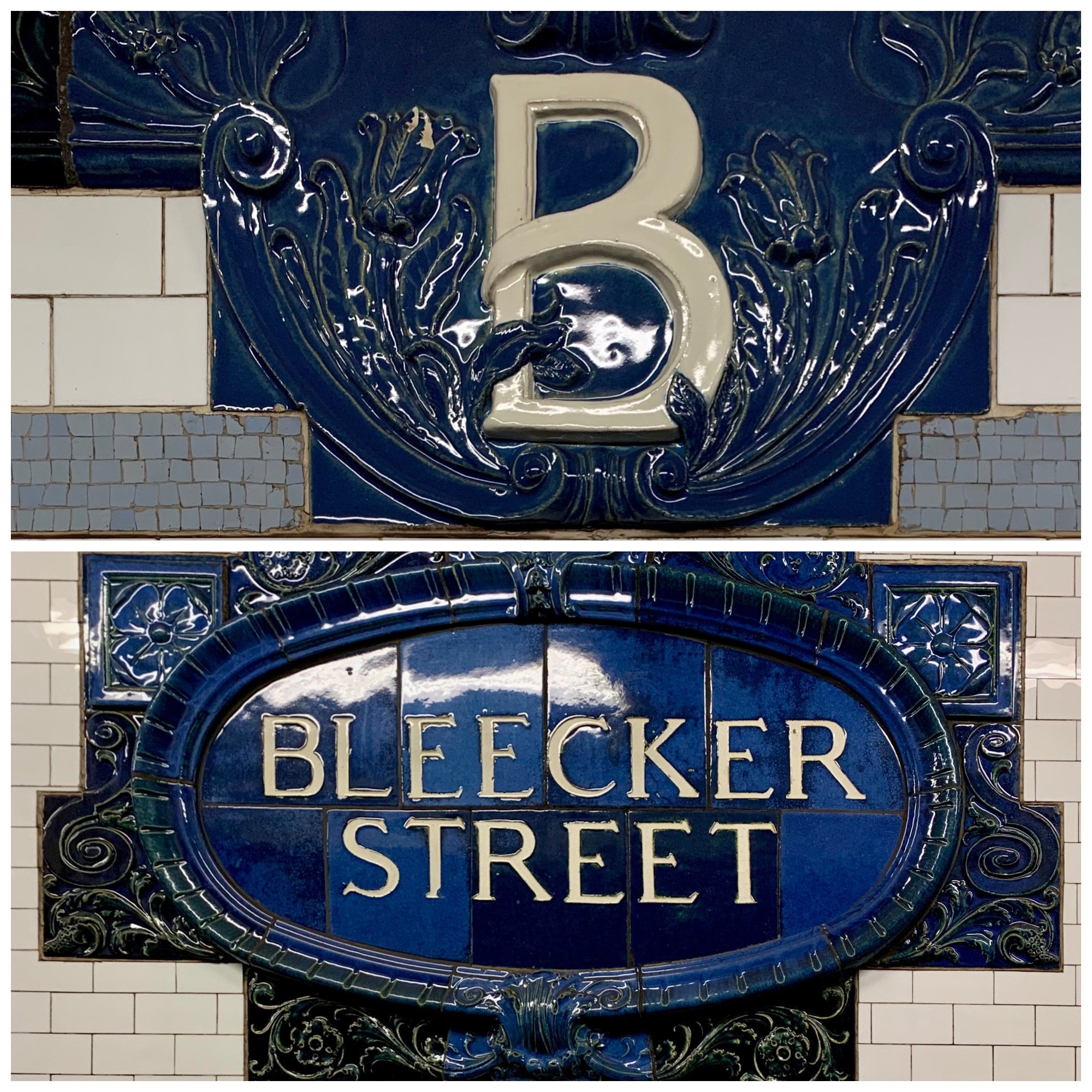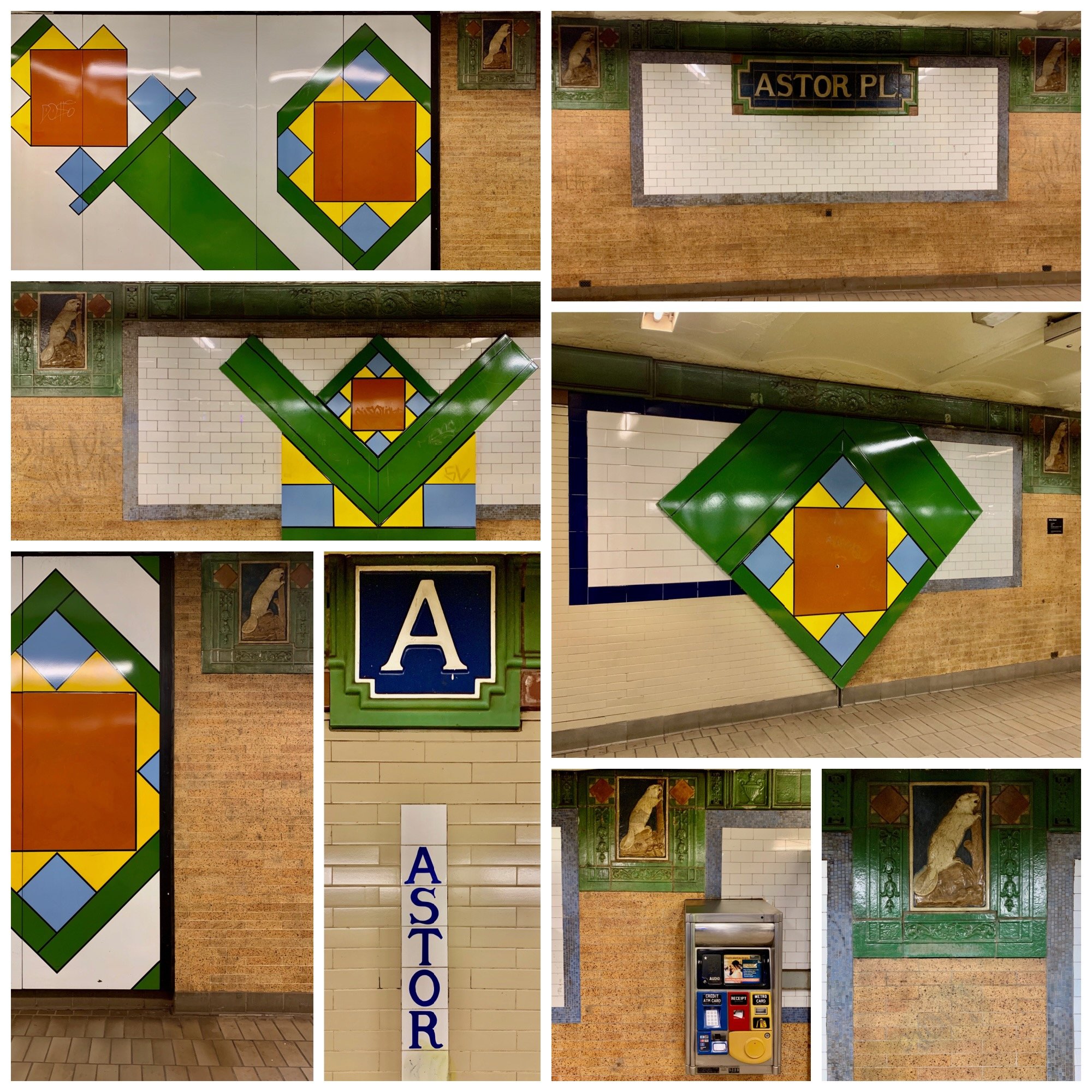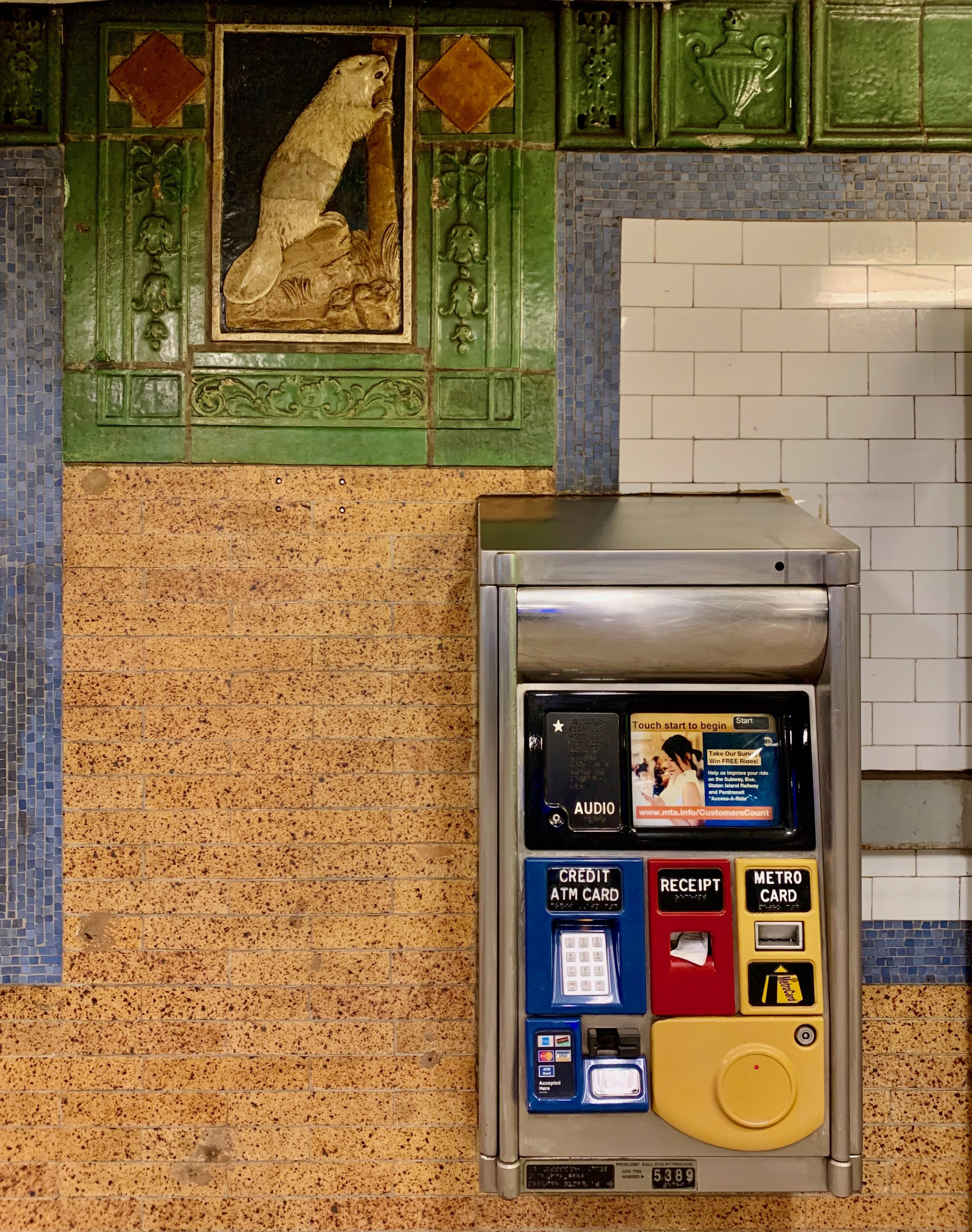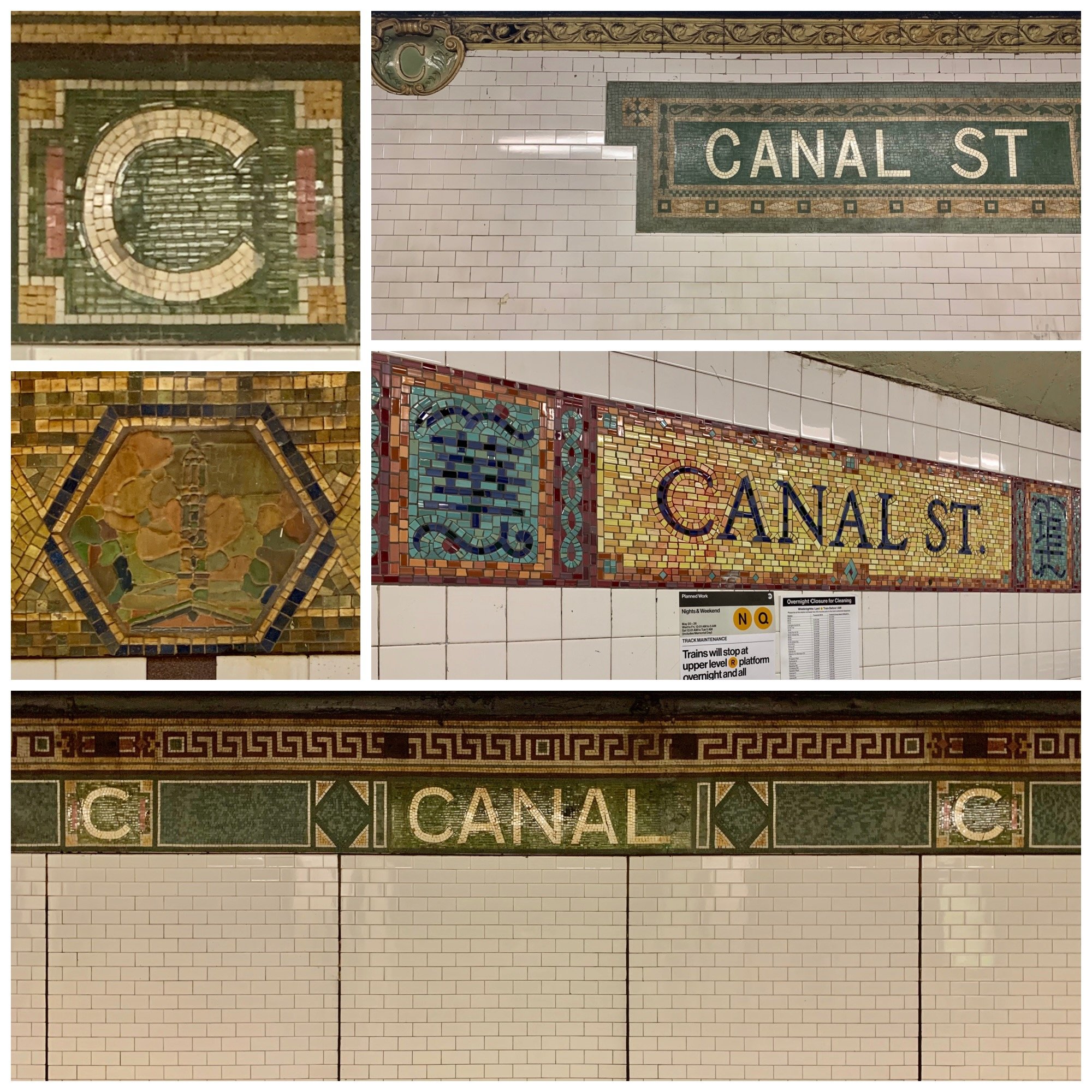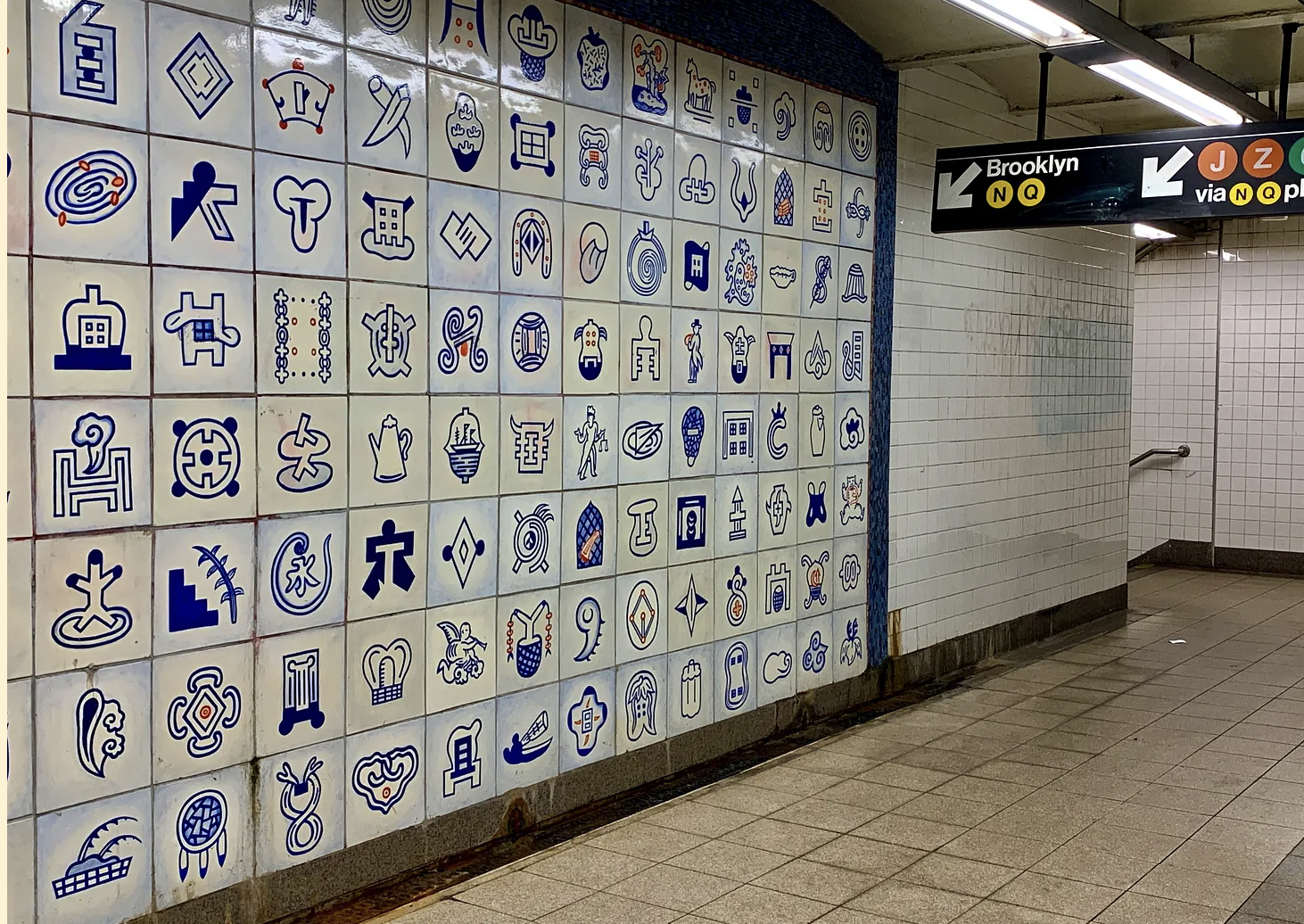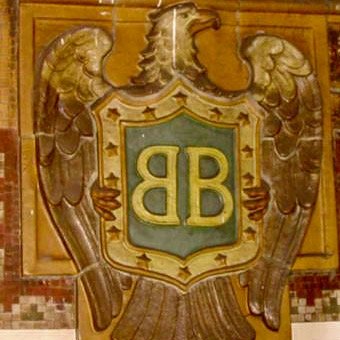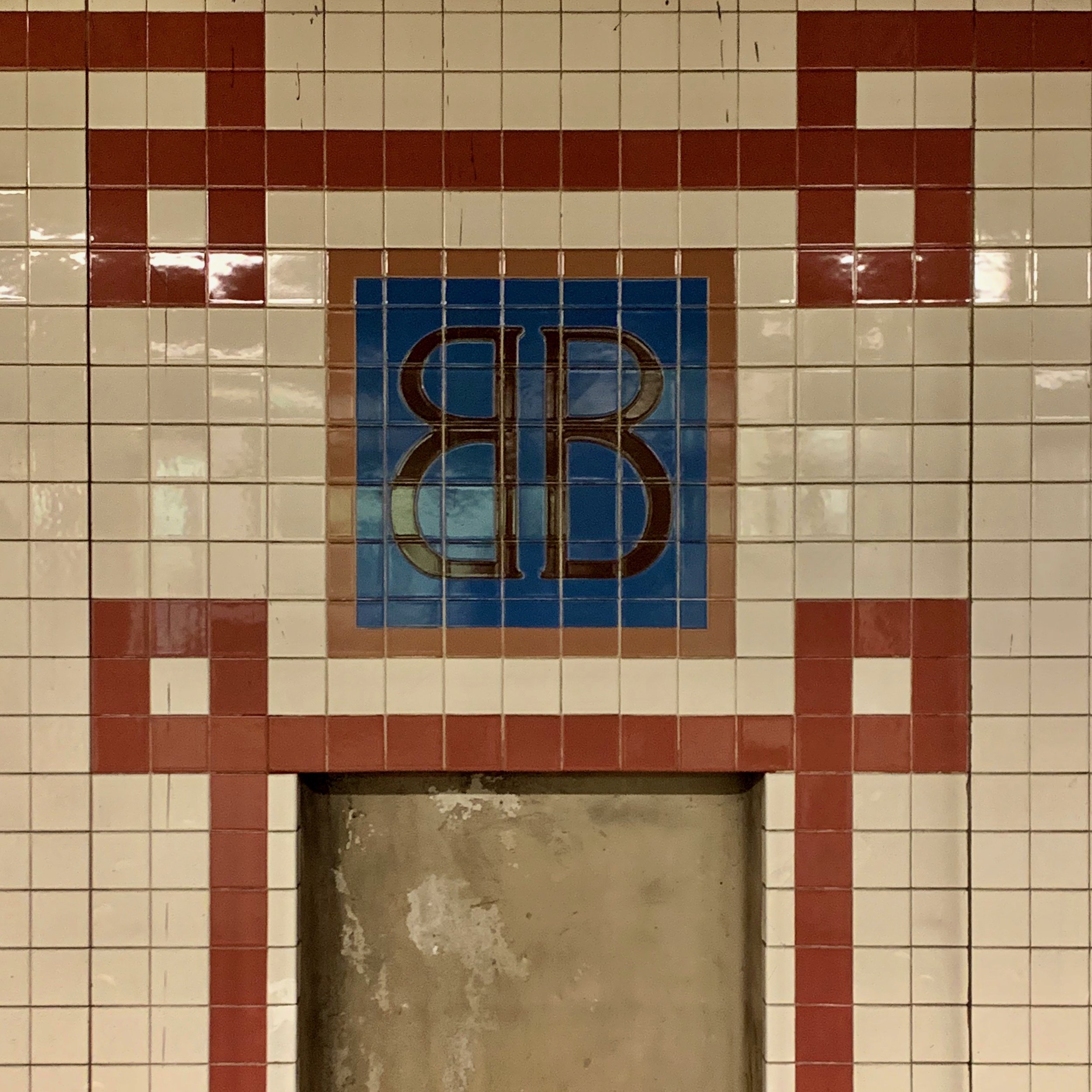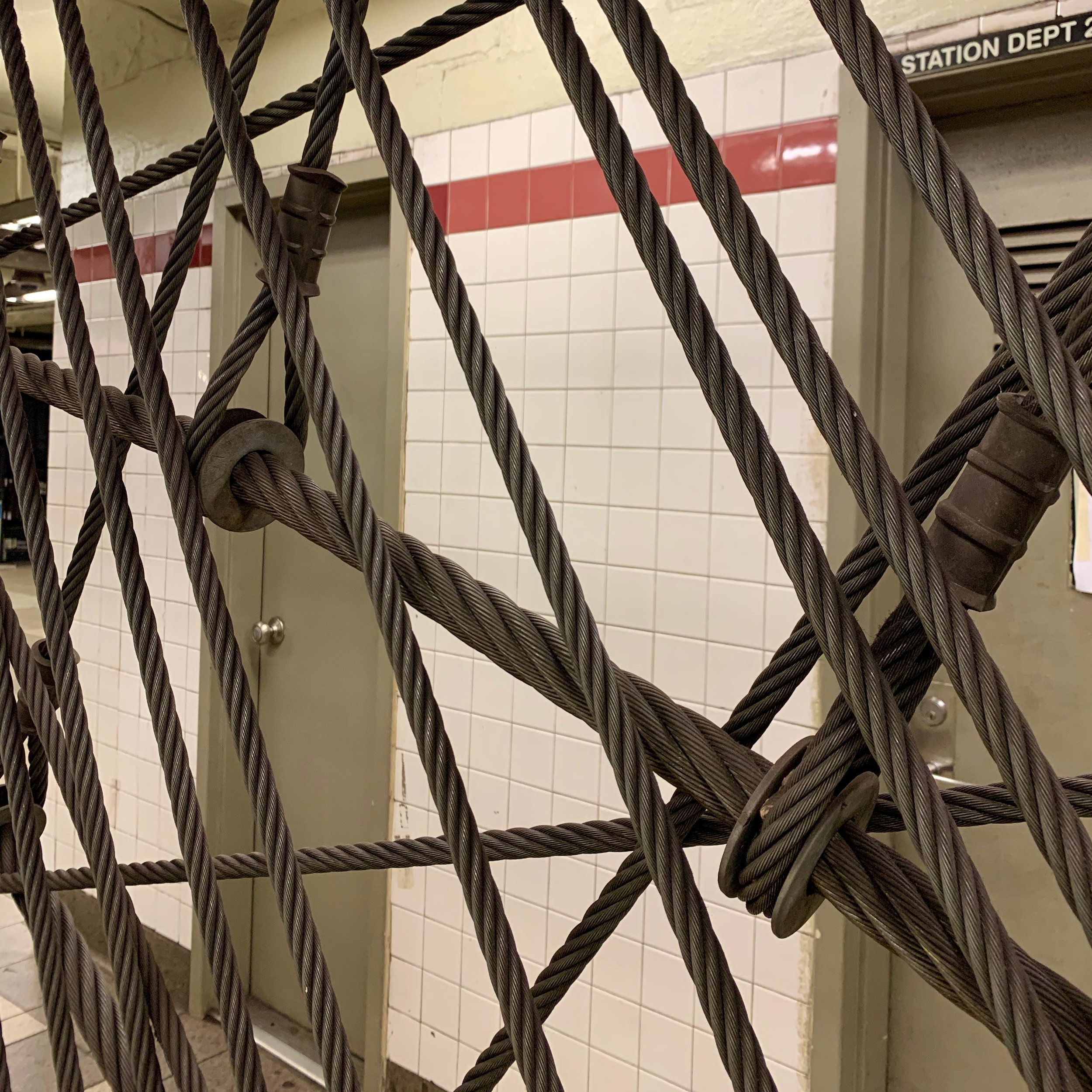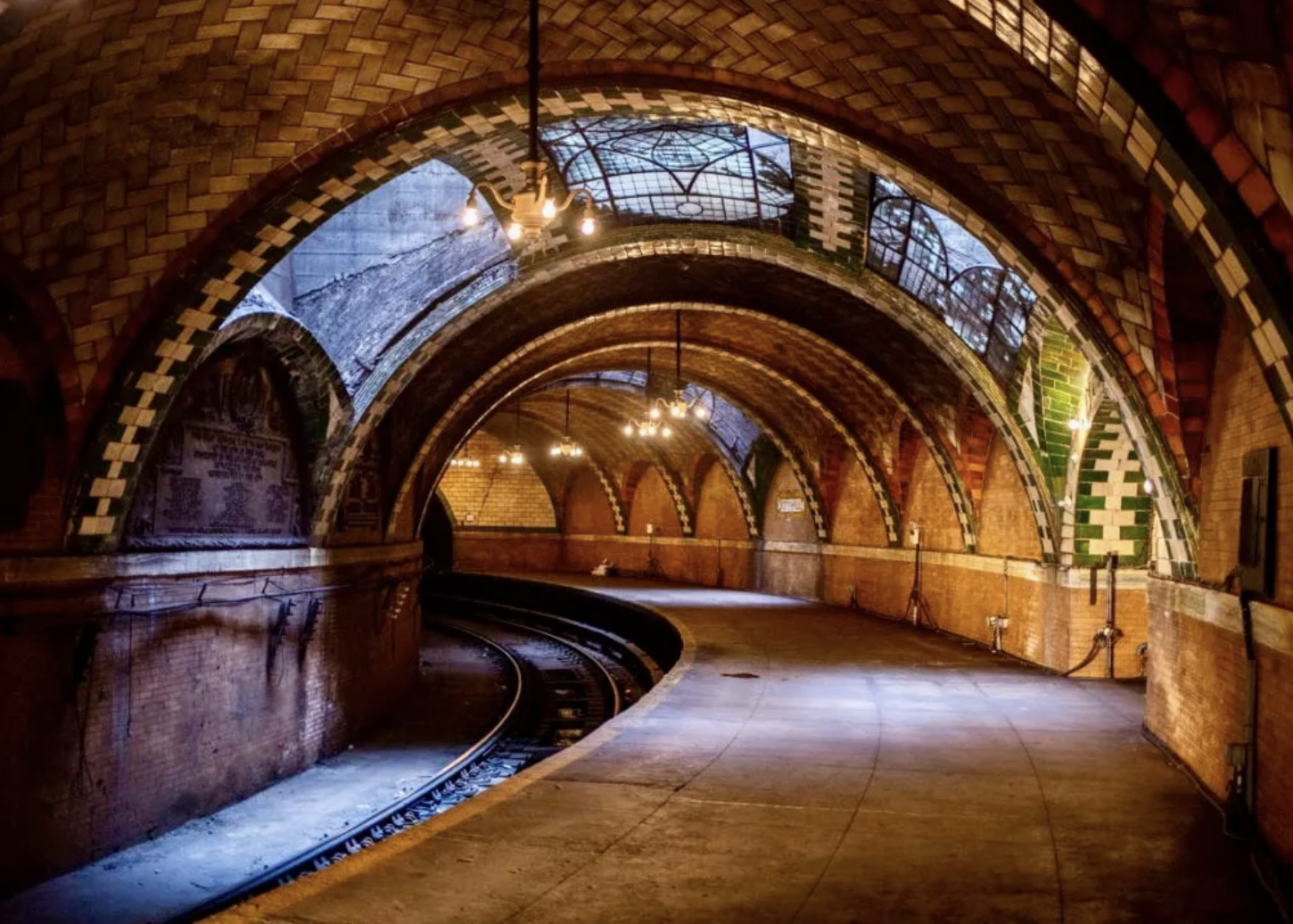Still on the ORIGINAL 28, these Interborough Rapid Transit (IRT) stops showcase Heins & LaFarge at their prime
George L. Heins and Christopher Grant LaFarge — the original architects of New York’s subway system — met as students at the Massachusetts Institute of Technology around 1880 and then worked in the architectural office of Cass Gilbert. In 1886, they set up their own New York practice. In the spring of 1900, Heins & LaFarge, after finishing some impressive commissions, met the financier August Belmont, the head of the consortium that was building New York's first underground mass transit system. In March 1901, Belmont helped get them appointed as architects for the first subway line, to run from City Hall to Grand Central, across to Times Square, and up Broadway to West 145th Street.
Bleecker Street: For the station at Bleecker and Lafayette Streets, Heins & LaFarge, designed two styles of station identifiers made by the Grueby Faience Company in 1904. The large broad oval medallion, glazed faience “Bleecker Street” plaques in cobalt blue with white letters depicting poppies were assembled from 27 pieces of faience ceramic. The smaller blue “B” cartouches show tulips, serving as a reminder of the Dutch origins of the city. Later Squire Vickers’ installed five different colored mosaics, which were sadly removed in the station’s 2012 renovation.




